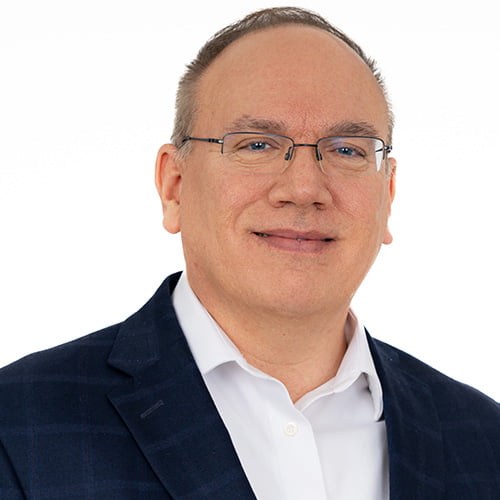Is the Seller-Doer Model Right for Your AEC Firm?

Professional services firms often approach sales differently than other industries. Law firms and accounting firms, for instance, often require staff to bring in their own business. It is a tried and true model as old as the professions, and the generic term for these professionals is “seller-doer.” Within the built environment – architecture, engineering, construction, environmental, construction management, and related firms – many firms employ a similar model.
In general, companies utilize one of these models:
- Exclusively seller-doer. These firms have no dedicated sales (business development) staff, and staff members in certain positions are required to bring in work for the firm. These positions may include president/CEO, vice president, principal, partner, project executive, project manager, lead architect (or engineer or designer, etc.), superintendent, and estimator.
- Exclusively dedicated business developer. With this model, firms rely on sales professionals to generate work, whether calling on existing clients or new clients. Typical positions include business development representative, business development manager, business development director, or something similar.
- Combination seller-doer and business developer. Firms employing this model rely on both higher-level technical staff to conduct business development (seller-doers) while also employing dedicated sales professionals. Seller-doers typically focus on generating repeat work from existing clients while business development staff generate business opportunities with prospective new clients.
So, which is the best sales approach for your firm?
Like many things in life, the answer is “it depends.”
There is really no one-size-fits-all business development approach for AEC and related firms. There are so many variables to consider, including the complexity of the sales process and the service offerings, the sales aptitude of your key technical staff, the financial model of the firm, the geographic area covered by the firm, and many more factors.
One of the most important things to consider is the preference of the buyers – the clients and prospective clients. Who do they want to call on them? Do they want initial meetings with sales professionals, followed by meetings with subject matter experts? Or do they want to meet with potential project team members from the very first conversation? Are they okay with a salesperson scheduling an initial meeting but bringing technical expertise with them?
Research conducted by the Society for Marketing Professional Services (SMPS) Foundation in the book A/E/C Business Development – The Decade Ahead found that different categories of buyers have generalized preferences for how they prefer to be “sold.”
Governmental buyers (local, state, federal) appreciate meeting with nontechnical business developers because they themselves frequently do not have technical backgrounds.
Industrial and corporate buyers tended to prefer to meet with technical professionals from the initial conversations.
Institutional buyers like education and health care systems had a less pronounced preference, one way or the other.
Why the Seller-Doer Model Fails.
There are several reasons for the lack of success, with these being the major ones:
- Lack of training. Sales are often “thrust” upon individuals as they advance in a firm or get hired into certain positions. Their reward for excelling at one thing is often being given responsibility—and accountability—for something they know little about! SMPS research found that two-thirds of firms that utilize seller-doers do not provide any sales training.
- Lack of aptitude. “Sell” is a four-letter word, and some people don’t have the aptitude for it. Selling is a tough profession continually filled with rejection and can be highly intimidating to many people, particularly in the AEC industry. Successful selling requires certain personality traits.
- Lack of time. The oft-quoted excuse for a seller-doer not selling is, “Would you rather I take care of our existing clients that are paying us or try to find new clients?” Seller-doers must balance billable work with business development, and by default, they typically focus their efforts on doing the work, not getting the work.
- Lack of tools/support. This is actually a challenge facing dedicated business developers as well. To succeed, they need a marketing machine that researches target markets and identifies prospects, creating marketing content of value to share and helping with messaging for proposals and presentations. If this function is not present within a firm, it makes the sales process all that much more difficult.
Advantages of the Seller-Doer Model
Firms continue to try to succeed with the seller-doer model because an increasing number of clients prefer to meet with people who will be managing or leading their project(s). In fact, concerns about nontechnical salespeople struggling to articulate offerings and value messages is a frequently-cited reason for using the model. Continuity of relationship from the initial stages through a project’s life cycle is another advantage, and seller-doers are often tasked with generating repeat work with the clients they serve, providing additional services, or working in multiple locations (this is known as account mining).
But the reasons for failure outlined above are very real for many firms. To succeed with the seller-doer model, you need everyone to be on “the right seat on the bus.” Seller-doers must have the right aptitude and training, and their firm must be 100% behind them to provide sales and marketing support while budgeting meaningful periods of non-billable hours to focus on business development.
If you’re struggling to get the results you need with your seller-doers, or you are looking to implement the model, reach out to Scott D. Butcher, FMPS, CPSM, to discuss where to go next. This could include business development strategy and planning or training for your seller-doers.



